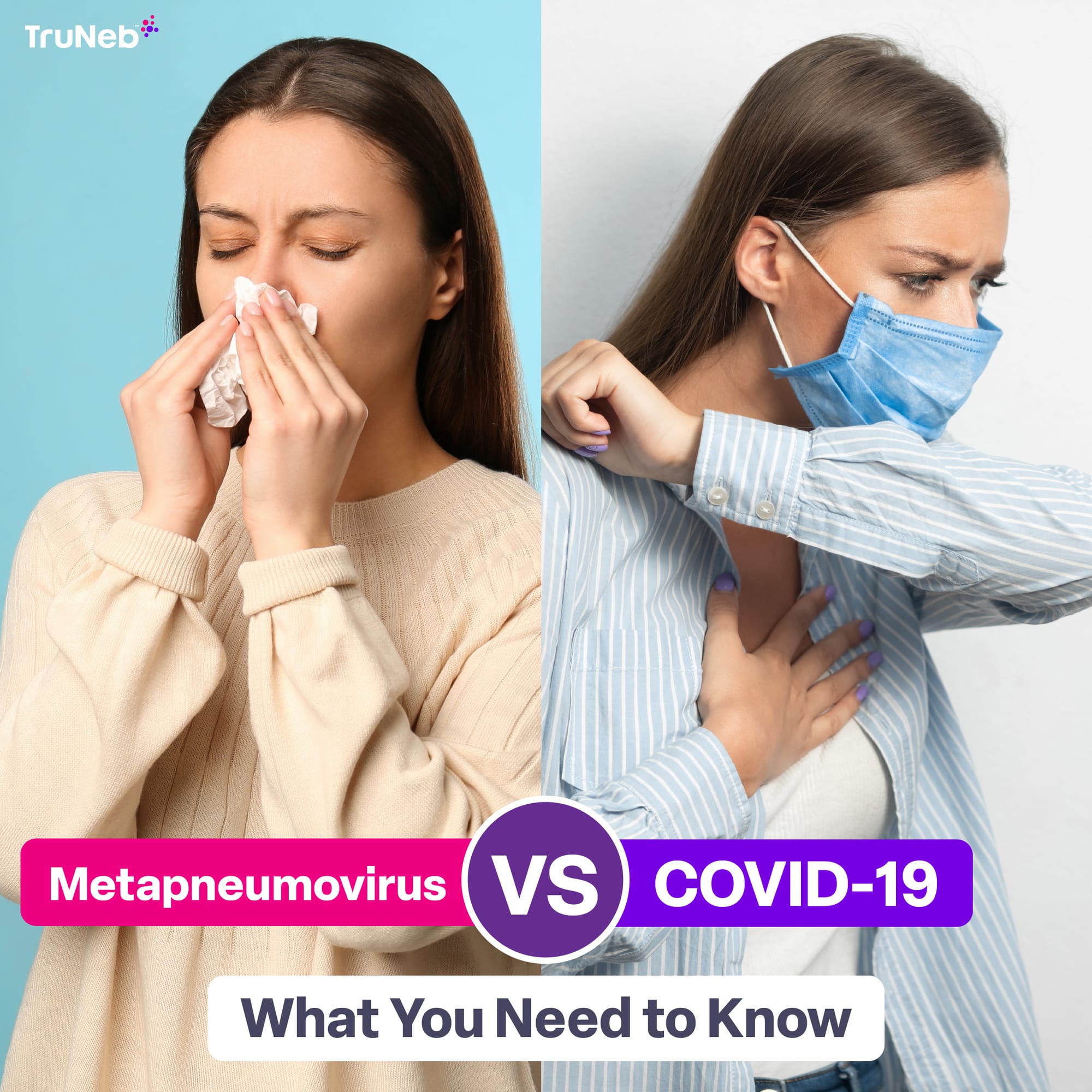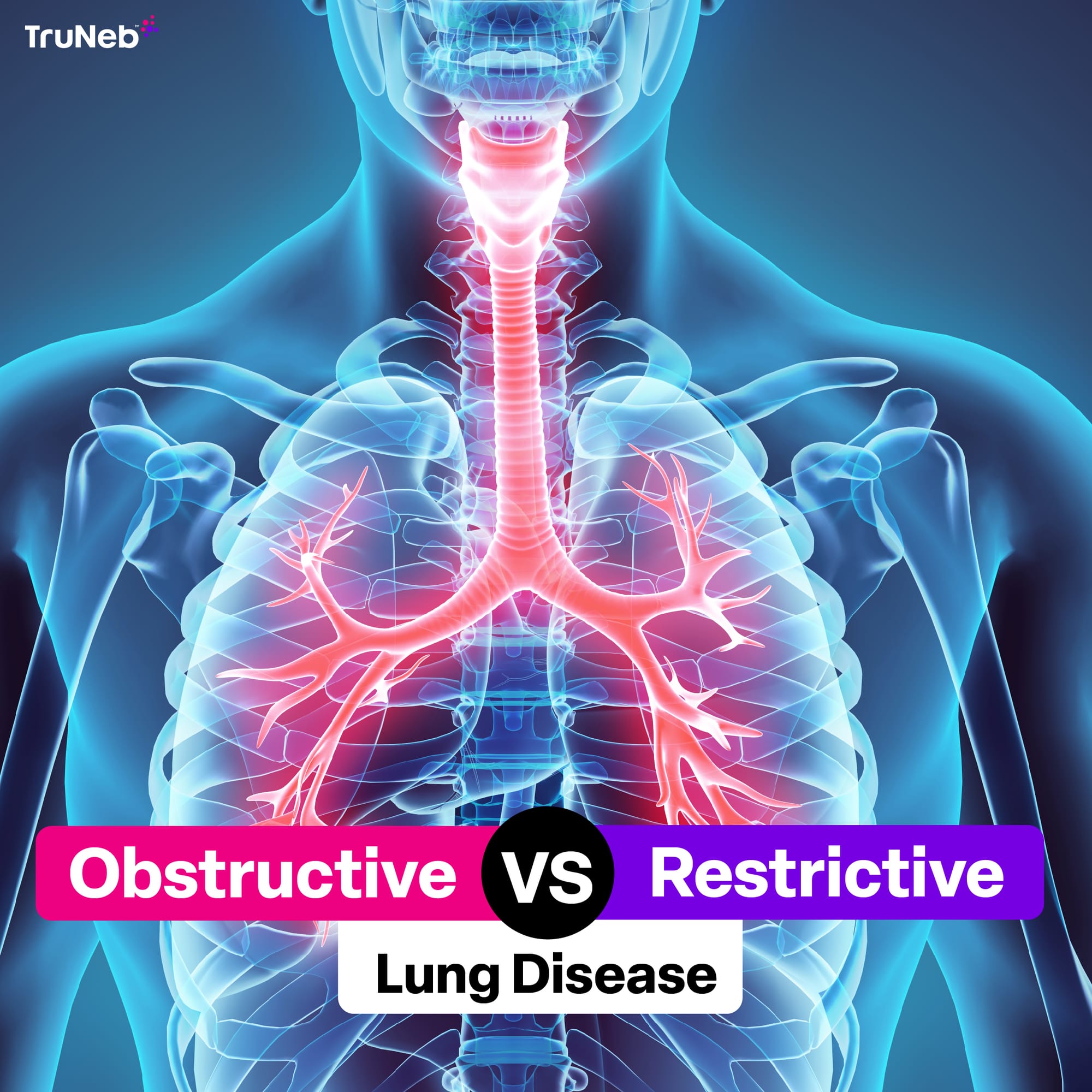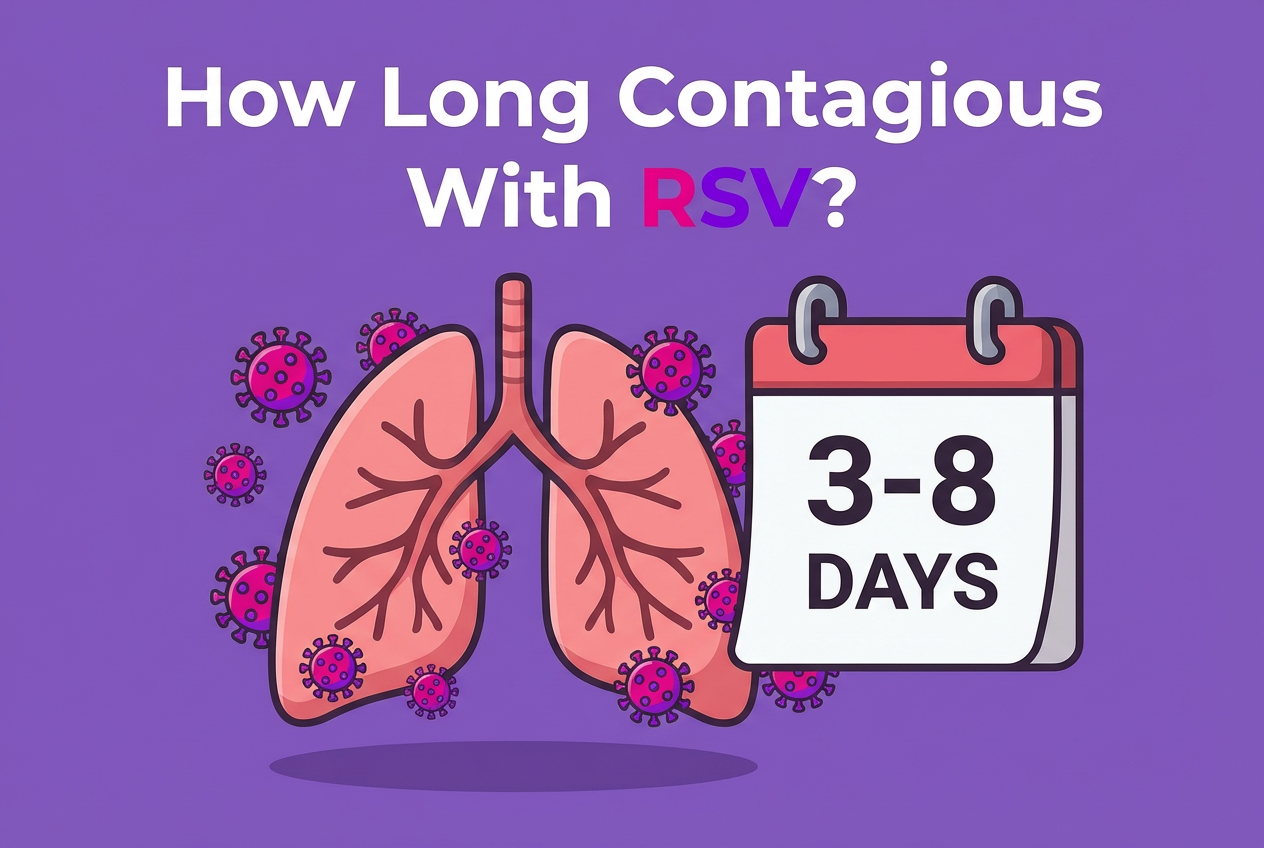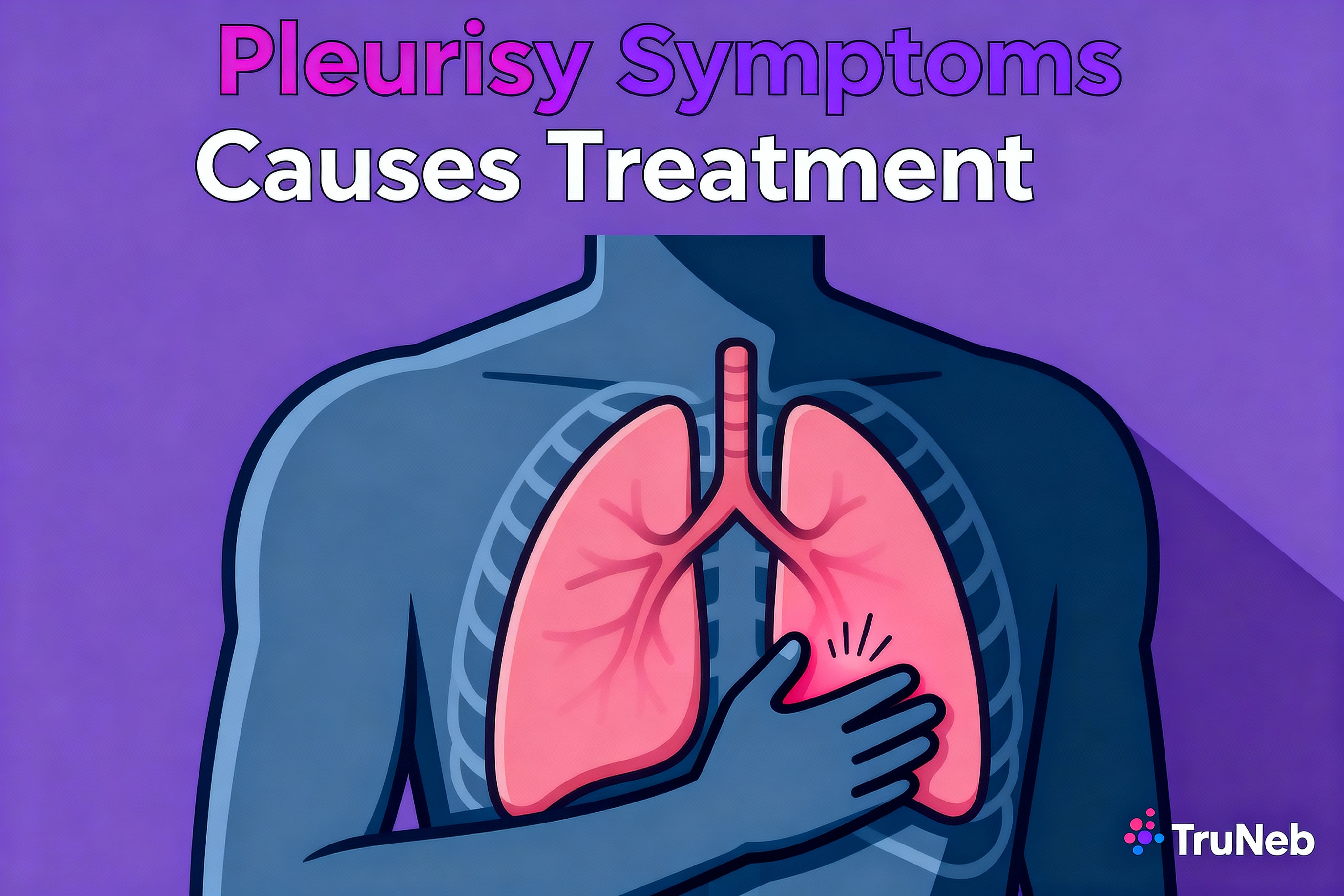On this page

Vaping has been marketed as a "safer alternative" to smoking, but is it truly harmless? As more people—especially young adults—turn to e-cigarettes, concerns about their long-term health impacts, including the risk of lung cancer, are rising. So, can vaping cause lung cancer? This article dives into what vaping does to your lungs, its associated risks, and whether it could lead to cancer. Let’s separate fact from fiction and get to the bottom of this pressing issue.
What Is Vaping, and How Does It Work?
If you’ve ever seen someone exhaling a cloud of vapor that smells like fruit or candy, you’ve witnessed vaping. But what exactly is vaping, and how does it work, and can vaping cause lung cancer? Let’s break it down.
At its core, vaping is inhaling a vaporized liquid using a device like an e-cigarette, vape pen, or mod (a fancier version of a vape pen). Instead of burning tobacco like regular cigarettes, vaping heats up a liquid—usually called e-liquid or vape juice—until it turns into an aerosol that you breathe in. Sounds simple, right? Well, there’s more to the story.

How Does a Vape Work?
Here are all the parts of a vape or e-cigarette:
- The Battery: Every vape has a small, rechargeable battery that powers the whole operation.
- The Coil: This is the heating element that warms up the e-liquid.
- The E-Liquid: This is the mix that gets vaporized. It typically includes nicotine, flavorings, and solvents like propylene glycol or vegetable glycerin.
- The Vapor: When the liquid heats up, it turns into a mist (not smoke) that’s inhaled through the mouthpiece.
It’s a clever piece of technology, but it’s also a sneaky way to introduce some potentially harmful substances into your body.
What’s in the Vapor?
Despite the common belief, vape clouds aren’t just “harmless water vapor.” They’re a cocktail of chemicals that can vary depending on the brand and type of e-liquid. Some of the usual suspects include:
- Nicotine: Highly addictive and harmful to your brain, heart, and lungs.
- Flavoring Agents: They might smell like candy or fruit, but many contain chemicals like diacetyl, which has been linked to lung damage.
- Heavy Metals: Yep, metals like lead and nickel can leach from the coil into the vapor.
- Other Chemicals: Substances like formaldehyde (a known carcinogen) can form when the e-liquid overheats.
Even though it might seem trendy or less harmful than smoking, vaping introduces a mix of substances into your lungs. And that’s where things get concerning.
How Does Vaping Affect the Lungs?
Your lungs are incredible organs, designed to take in fresh air and deliver oxygen to your bloodstream. But when you vape, you’re putting them in contact with a mix of chemicals they’re not built to handle.
Short-Term Effects on Your Lungs
Even if you’ve just started vaping, you might notice some immediate effects. These can include:
- Irritated Airways: The chemicals in vape aerosol can irritate the delicate lining of your airways, causing coughing, throat discomfort, and sometimes wheezing.
- Shortness of Breath: Some people find that their lungs feel “heavy” or they can’t take a deep breath after vaping.
- Reduced Lung Function: Research shows that vaping can make it harder for your lungs to do their job, especially if you already have asthma or another respiratory condition.
Long-Term Risks
The longer you vape, the greater the potential for serious problems. Here’s what researchers are uncovering:
- Chronic Inflammation: Vaping can trigger ongoing inflammation in the bronchioles, which over time might lead to lung diseases like chronic obstructive pulmonary disease (COPD).
- Popcorn Lung: This condition, officially called bronchiolitis obliterans, scars and narrows the smallest airways in your lungs. It’s linked to a chemical called diacetyl, found in some flavored vape liquids.
- Lipoid Pneumonia: Inhaling the oily substances in vape juice can cause this rare type of pneumonia, where your lungs react to the oils by becoming inflamed.
- EVALI: You might remember the 2019 outbreak of E-cigarette or Vaping-Associated Lung Injury (EVALI), where thousands of people were hospitalized with serious lung damage. The culprit? Additives like vitamin E acetate in certain vape liquids.
Does Vaping Cause Lung Cancer?
So, vaping and lung cancer. Because vaping is still relatively new, scientists don’t yet have long-term data on whether it directly causes lung cancer. But we do know that many of the chemicals in vape aerosol—like formaldehyde and benzene—are known carcinogens. These substances can damage the DNA in your lung cells, potentially setting the stage for cancer later on.
Chemicals in Vape Aerosols
When you vape, you’re inhaling more than just a cloud of flavored mist. The aerosol (often mistakenly called “vapor”) is a complex mix of chemicals, many of which are far from harmless. Let’s take a closer look at what’s actually in those puffs.
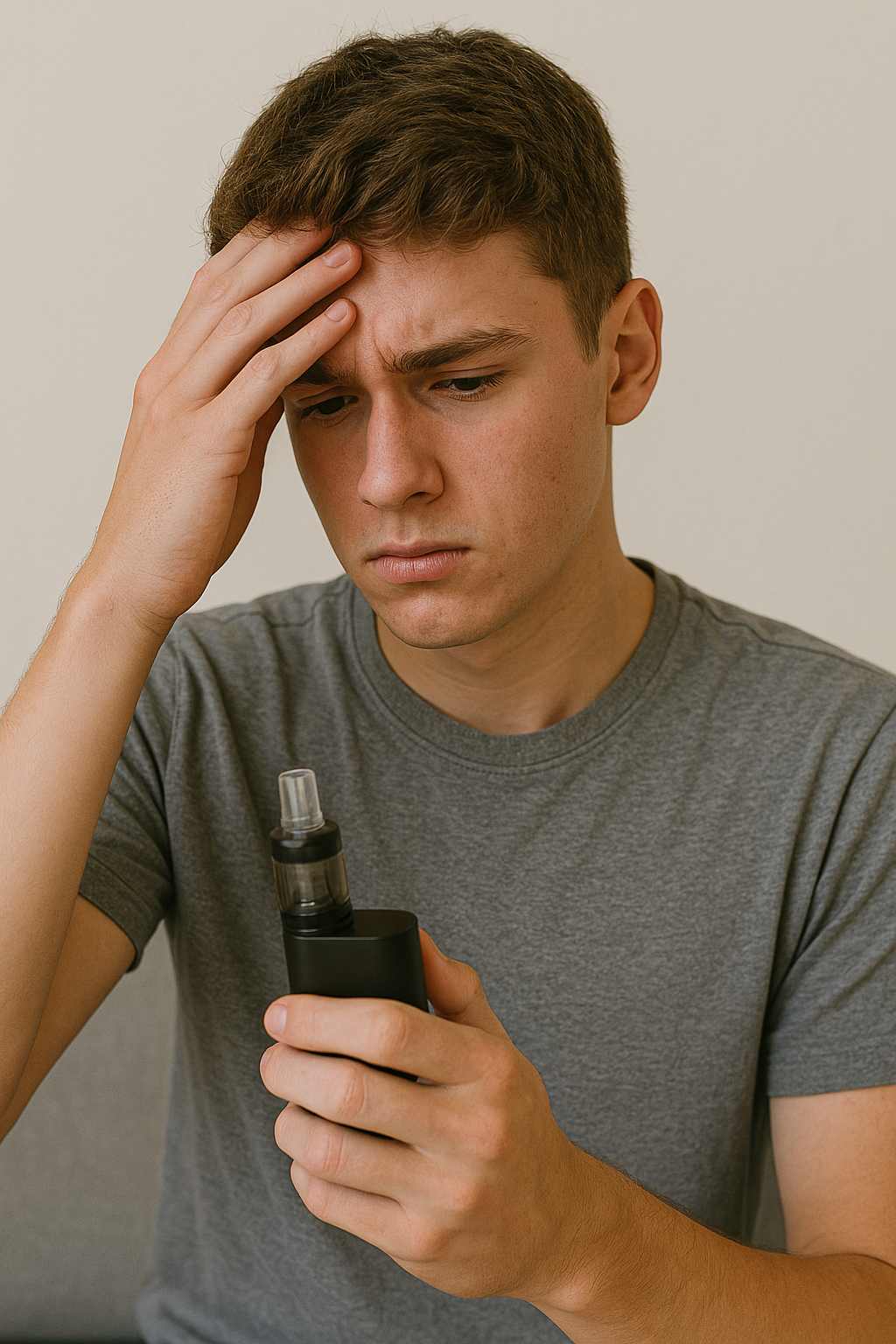
Nicotine: The Addictive Core
Nicotine is one of the most common ingredients in vape liquids, and it’s the same addictive substance found in traditional cigarettes. Vaping might seem like a safer way to consume nicotine, but the reality is that it’s just as habit-forming. Nicotine can:
- Harm Brain Development: In adolescents, nicotine can interfere with brain development, especially in areas related to memory and decision-making.
- Increase Heart Rate: Nicotine stimulates your cardiovascular system, putting strain on your heart over time.
- Deepen Addiction: Vaping can lead to a cycle of dependence, often making it harder to quit altogether.
Flavoring Agents: Sweet but Risky
Those fruity, candy-like flavors might seem innocent, but many contain chemicals that can harm your lungs. One standout culprit is diacetyl, a compound linked to “popcorn lung,” a serious condition that scars the small airways in your lungs.
Heavy Metals: Unexpected Invaders
Some vapes release heavy metals like lead, nickel, and tin into the aerosol. These metals come from the heating coil inside the device and can end up in your lungs. Long-term exposure to heavy metals has been associated with lung and kidney damage. When asking, "can vaping cause lung cancer?", cancer risk is just one part of the equation. Other negative outcomes are equally as bad.
Toxic Byproducts: Hidden Dangers
When the liquid in a vape heats up, it can create new chemicals, including:
- Formaldehyde: A known carcinogen that can irritate your respiratory system.
- Acrolein: Often used as a weed killer, acrolein can damage lung tissue.
- Volatile Organic Compounds (VOCs): Found in industrial chemicals, VOCs can cause throat irritation and contribute to long-term health issues.
Even though e-cigarettes might lack some of the toxins in traditional cigarettes, they come with their own set of risks. The bottom line? The chemicals in vape aerosol can irritate, inflame, and even damage your lungs.
Vaping vs. Smoking: Which Is Safer?
If you’ve ever wondered, “Is vaping safer than smoking?” you’re not alone. It’s one of the most debated topics in public health, and the answer isn’t as straightforward as you might hope.
How Vaping and Smoking Differ
At first glance, vaping and smoking might seem worlds apart. Smoking involves burning tobacco, releasing thousands of chemicals, many of which are known to cause cancer. Vaping, on the other hand, heats a liquid to produce aerosol. This process avoids some of the harmful byproducts of combustion, but that doesn’t mean it’s safe.
Is Vaping Less Harmful?
Vaping does expose users to fewer toxic substances compared to smoking. For example:
- Cigarettes contain tar, a sticky residue that builds up in the lungs, while vapes do not.
- Traditional cigarettes release over 7,000 chemicals, many of which are carcinogenic, whereas vapes have fewer—but still harmful—compounds.
That said, vaping carries its own unique risks:
- Chemicals like diacetyl and formaldehyde found in vape aerosol can cause respiratory damage.
- Long-term effects of vaping are still unknown, making it a gamble for your health.
Vaping vs Smoking: A Comparison
| Aspect | Vaping | Smoking |
|---|---|---|
| Delivery Method | Heats e-liquid into aerosol | Burns tobacco to produce smoke |
| Nicotine Levels | Varies; harder to gauge due to unregulated products | Typically consistent across cigarettes |
| Toxins | Fewer known toxins but contains chemicals like diacetyl and benzene | Contains over 7,000 chemicals, many of which are carcinogens |
| Health Risks | Popcorn lung, EVALI, nicotine addiction, potential long-term effects | Proven links to lung cancer, heart disease, and COPD |
| Secondhand Exposure | Secondhand vapor contains harmful particles like nicotine and toxins | Secondhand smoke contains tar, carbon monoxide, and other carcinogens |
| Regulation | Loosely regulated; contents often unclear | Heavily regulated; standardized contents |
The Bottom Line
Vaping might be less harmful than smoking, but it’s not “safe.” For non-smokers, starting to vape poses unnecessary risks. For smokers looking to quit, vaping might be a stepping stone, but it’s not a harmless one. Experts agree that the best choice for your health is to avoid both.
The Rise of Vaping Among Youth
Over the past decade, vaping has skyrocketed in popularity among teens and young adults. What started as a tool to help smokers quit has morphed into a trend with major public health implications. So, why is vaping so appealing to young people, and what are the consequences?
Why Teens Are Drawn to Vaping
Vaping companies have mastered the art of marketing, and their strategies often target younger audiences. Here’s what’s fueling the trend:
- Flavor Variety: With options like cotton candy, mango, and even dessert flavors, vaping appeals to teens who might never consider smoking.
- Social Media Influence: Platforms like TikTok and Instagram are flooded with vaping content, making it seem trendy and harmless.
- Discreet Devices: Modern vape pens are sleek and easy to hide, resembling USB drives or pens. This makes them convenient for teens to use without detection.
Vaping Health Risks for Youth
Vaping is especially dangerous for young people because their bodies and brains are still developing. Risks include:
- Nicotine Addiction: Teens who start vaping often develop a dependence on nicotine, which can lead to long-term addiction.
- Brain Development Issues: Nicotine exposure during adolescence can harm areas of the brain responsible for attention, learning, and impulse control.
- Gateway to Smoking: Studies show that teens who vape are more likely to transition to traditional cigarettes.
The rise of youth vaping is concerning not just for individual health but for public health as a whole. Increased rates of vaping among teens could reverse decades of progress in reducing tobacco use. That’s why schools, parents, and policymakers are working hard to curb this trend through education and stricter regulations.
Vaping may look harmless, but for teens, it’s a fast track to health risks and addiction. If you’re a parent or educator, it’s important to have open conversations about these dangers to help young people make informed choices.
Dual Use and Compounded Risks
Let’s talk about a habit that’s becoming more common: dual use—the simultaneous use of both cigarettes and vapes. If you think combining the two might be a way to “balance things out” or reduce harm, think again. The truth is, using both comes with compounded risks that can do more harm than good.
Why Dual Use Is a Growing Concern
Many smokers turn to vaping as a way to quit traditional cigarettes, but some end up continuing both habits. This could be due to:
- The belief that vaping offsets the dangers of smoking.
- Social or situational preferences—vaping in settings where smoking isn’t allowed.
- Increased nicotine dependency from consuming it through two sources.
The Double Whammy on Your Lungs
Dual use doesn’t just add the risks of smoking and vaping—it amplifies them. Here’s how:
- More Exposure to Harmful Chemicals: Smoking introduces tar and thousands of carcinogens into your lungs. Adding vaping piles on exposure to diacetyl, heavy metals, and other irritants.
- Increased Nicotine Addiction: Using both often leads to higher overall nicotine intake, making it harder to quit either habit.
- Greater Lung Stress: Your lungs face the cumulative effects of inhaling from two sources, increasing inflammation and making them more vulnerable to chronic conditions like COPD and even cancer.
The Risks of Secondhand Vapor
We’ve all heard about the dangers of secondhand smoke, but what about secondhand vapor? Many people assume it’s just harmless water vapor, but the reality is far more concerning. Let’s clear the air—literally.
What’s in Secondhand Vapor?
When someone exhales vapor from an e-cigarette, they’re releasing more than just flavored mist. Secondhand vapor contains:
- Nicotine: Even if you’re not the one vaping, you can still absorb this addictive substance.
- Ultrafine Particles: These tiny particles can lodge deep in the lungs and irritate airways.
- Toxic Chemicals: Substances like benzene (found in car exhaust) and diacetyl are present in secondhand vapor and can harm lung tissue over time.
Who’s at Risk?
Secondhand vapor can affect everyone, but some groups are particularly vulnerable:
- Children and Teens: Developing lungs are especially sensitive to the chemicals in vapor.
- Pregnant Women: Nicotine exposure can impact fetal development, even through secondhand means.
- People with Respiratory Conditions: Conditions like asthma or COPD can worsen when exposed to irritants in vapor.
Though secondhand vapor might not seem as harmful as cigarette smoke, it’s far from safe. If someone in your household vapes, encourage them to do so in a well-ventilated area away from others—or better yet, support them in quitting.
Quitting Vaping: A Path to Healthier Lungs
The thought of quitting vaping can feel overwhelming, especially if it’s become part of your daily routine. But here’s the good news: it’s never too late to stop, and your lungs—and the rest of your body—will thank you. Let’s explore why quitting matters and how you can make it happen.
Why Quitting Vaping Is Worth It
Vaping might seem like a lesser evil compared to smoking, but the truth is, it still takes a toll on your health. When you quit, you’ll:
- Improve Lung Function: Your lungs start to heal as inflammation decreases and tissue begins to repair itself.
- Break Free from Nicotine: Quitting helps reduce dependency on nicotine, which can improve your mental clarity and overall well-being.
- Protect Your Heart: Vaping is linked to increased heart rate and blood pressure—quitting lowers these risks.
Steps to Quit Vaping
- Set a Quit Date: Pick a day to start fresh and mentally prepare yourself for the journey.
- Find Your Motivation: Whether it’s protecting your health, saving money, or setting an example for loved ones, knowing your “why” can keep you motivated.
- Seek Support: Share your goal with friends or family, or join a support group. You’re not alone in this process.
- Consider Nicotine Replacement Therapy (NRT): Tools like patches, gum, or lozenges can help ease withdrawal symptoms.
- Use Behavioral Strategies: Replace the habit with something positive—go for a walk, chew gum, or try deep breathing exercises when cravings hit.
What Happens After You Quit
- Within Days: Your lungs begin to clear out mucus and other debris.
- Within Weeks: Your lung capacity improves, making it easier to breathe.
- Long Term: Your risk of vaping-related conditions, like popcorn lung or respiratory infections, drops significantly.
Quitting is a challenge, but it’s one worth taking on. Every small step you take toward quitting is a step toward better health and freedom from nicotine. You’ve got this!
The Verdict – Can Vaping Cause Lung Cancer
Is there a link between vaping and lung cancer? Because e-cigarettes haven’t been around long enough, there’s not quite a clear link yet between vaping and cancer. We do know that many of the chemicals in vapes are associated with cancer–which is enough to say it’s probably best to avoid them. Besides that, other risks make vaping a health risk, even without cancer in the picture.
At TruNeb™, we’re committed to educating people about respiratory health and helping people with lung disease live their best lives! Explore more of our respiratory blogs articles.
*Article reviewed by a licensed Registered Respiratory Therapist
**Last update: 4/14/2025


